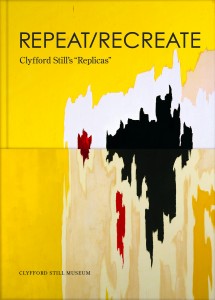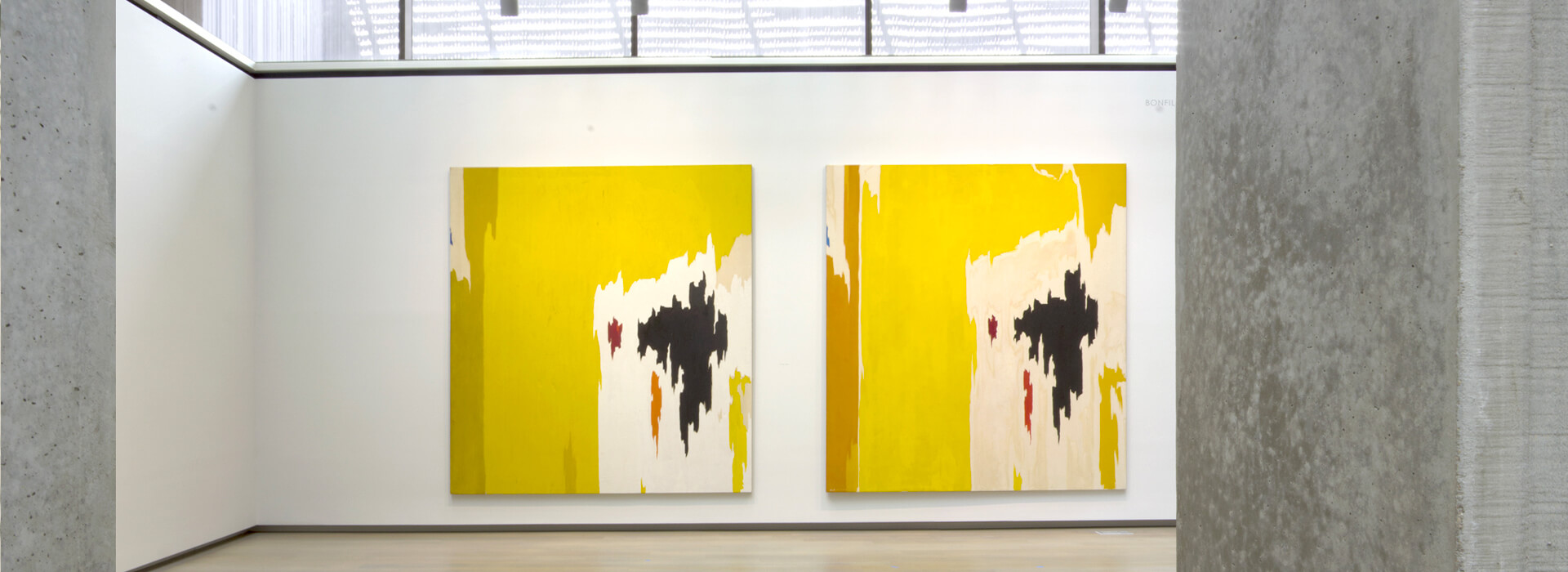“Making additional versions is an act I consider necessary when I believe the importance of the idea or break-through merits survival on more than one stretch of canvas.” —Clyfford Still
An exhibition of closely related compositions that Still called “replicas,” Repeat/Recreate features major works by Clyfford Still exhibited in pairings. Uncanny and often darkly magnetic, they provide a new and greater understanding of Still’s process and methods, while challenging the popular understanding of Abstract Expressionism as an outpouring of impulsive creativity.
The exhibition brings together works of art from some of the world’s most renowned collections, including the Metropolitan Museum of Art, Museum of Modern Art, Detroit Institute of Arts, Hirshhorn Museum and Sculpture Garden, and Smithsonian American Art Museum. At least nineteen works featured in Repeat/Recreate have never been shown publicly, and only one of the exhibition’s pairings has previously been exhibited in tandem.
Repeat/Recreate: Clyfford Still’s “Replicas” is curated by David Anfam and Dean Sobel, director of the Clyfford Still Museum. Anfam is senior consulting curator at the Clyfford Still Museum and director of the Clyfford Still Museum Research Center. The exhibition is accompanied by a catalogue that includes more than thirty full color plates as well as essays by Anfam and Neil Benezra, director of the San Francisco Museum of Modern Art. The catalogue is available for purchase at the Museum and shop.clyffordstillmuseum.org.

More
The pairings in Repeat/Recreate date from 1925 to 1974. There are more than 70 works in the exhibition, including 43 paintings as well as etchings, lithographs, watercolors, and other works on paper. Works range in size from just 5 by 3.5 inches to as large as 16 by 9.75 feet.
Often only small divergences are detectible between Still’s replicas, which range from duos to trios. In other instances, an earlier composition is recast with strikingly novel chromatic choices or on a somewhat changed scale. “Rather than take these ‘doubles’ and ‘triples’ as evidence of an iconoclastic modernist mindset—like, say, a forerunner of Andy Warhol’s proliferating pop culture symbols—it may be more appropriate to locate them in the lineage of Titian or Rembrandt, both of whom made thoughtful copies or variants of the same subject,” says David Anfam. “That among the artistic predecessors whom Still studied were Paul Cézanne and Vincent van Gogh seems notably significant, as each famously worked in series. Still’s serial procedures have a similar kind of recurrent intensity about them.”
“The mere existence of these replicas throws much of popular culture’s perception of Abstract Expressionism off balance,” says Dean Sobel. “This exhibition illustrates how paintings of Still, Pollock, Rothko, and Motherwell were not the outpourings of unbridled and fleeting creative impulses but were, in fact, the result of slow, methodical deliberations that could—and would—be recreated in marvelous variations. These vanguard ‘irascibles,’ as they were dubbed in 1950, were more traditional than what many viewers might oftentimes suspect. Whether it be Pollock’s poured and drip works, Rothko’s basic juxtaposed rectangles, Newman’s ‘zips’ or Motherwell’s Elegies to the Spanish Republic, replication is at the core of Abstract Expressionism as a whole.”
